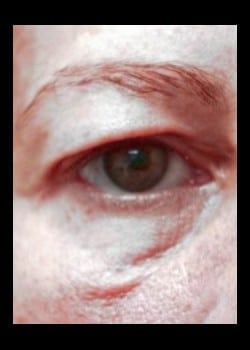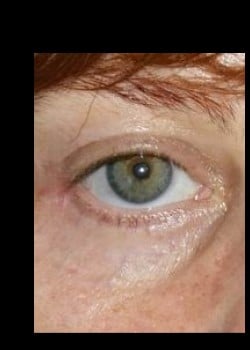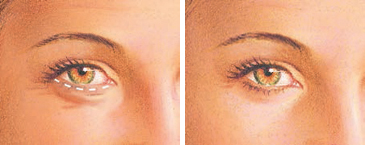Upper and Lower Lid Blepharoplasty
Individual results may vary.
Case ID: 2310Upper lid skin reduction with lower lid skin tightening as well as fat transposition over the orbital rim to smooth out the lid/cheek junction
*Plastic Surgery results can vary from patient to patient and are not guaranteed
What eyelid surgery can treat
- Loose or sagging skin that creates folds or disturbs the natural contour of the upper eyelid, sometimes impairing vision
- Fatty deposits that appear as puffiness in the eyelids
- Bags under the eyes
- Drooping lower eyelids that reveal white below the iris
- Excess skin and fine wrinkles of the lower eyelid
Who is a good candidate for eyelid surgery?
Good candidates for eyelid surgery include:
- Healthy individuals with no medical conditions that can impair healing
- Nonsmokers
- Individuals with a positive outlook and realistic goals
- Individuals without serious eye conditions
What are the steps of an eyelid surgery procedure?
An eyelid surgery procedure includes the following steps:
Step 1 – Anesthesia
Medications are administered for your comfort during the surgical procedure. The choices include intravenous sedation or general anesthesia. Your doctor will recommend the best choice for you.
Step 2 – The incision
The incision lines for eyelid surgery are designed so the resultant scars will be well concealed within the natural structures of the eyelid region.
The upper eyelid can be corrected through an incision within the natural crease on the eyelid. This allows for removal or repositioning of fat deposits, tightening of muscles and removal of excess skin.
Conditions of the lower eyelid may be corrected with an incision just below the lower lash line. Through this incision, excess skin in the lower eyelid is removed. Again, the excess fat can be repositioned or removed.
A transconjunctival incision, created on the inside of the lower eyelid, is an alternate technique to correct lower eyelid conditions and redistribute or remove excess fat. With this technique, no skin is removed.
Step 3 – Closing the incisions
Eyelid incisions typically are closed with sutures or skin glue. Sutures are removed within one week.
Your surgeon may also suggest use of a laser or chemical peel to reduce discoloration of the lower eyelids.
Step 4 – See the results
The results of eyelid surgery will appear gradually as swelling and bruising subside to reveal a smooth, better-defined eyelid and surrounding region, and a more alert and rejuvenated appearance. Get more information about eyelid surgery results.
Remember that the eyelids are part of the face. The appearance of a drooping upper lid may also be due to relaxation of the forehead skin and eyebrow. Sometimes stretching out of the upper eyelid muscle may cause a drooping eyelid. This is called eyelid ptosis and requires a different surgical treatment.



